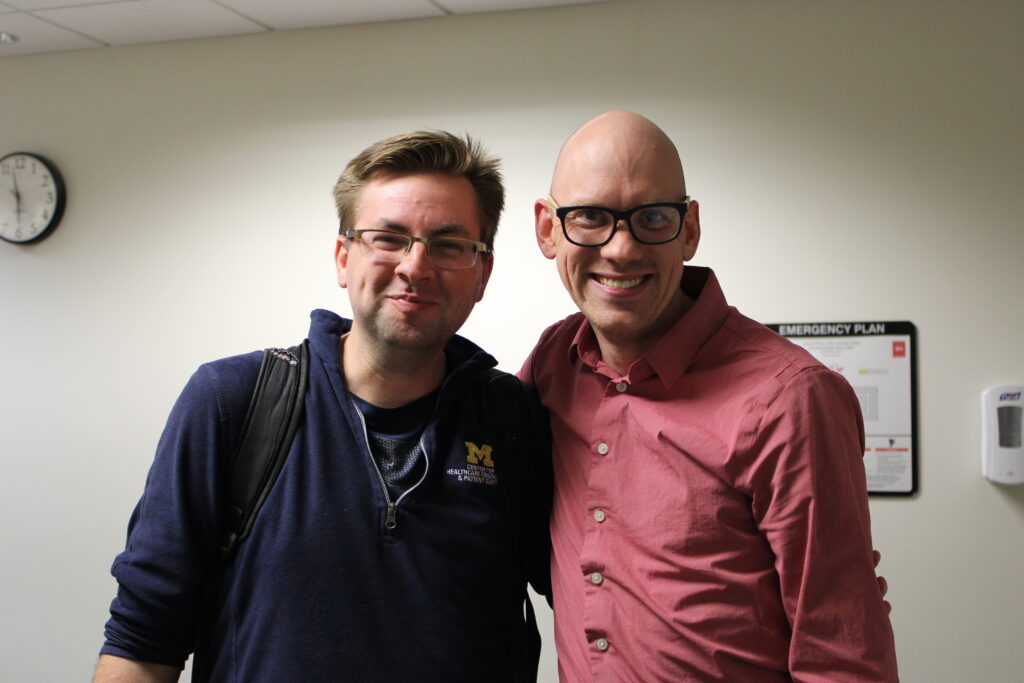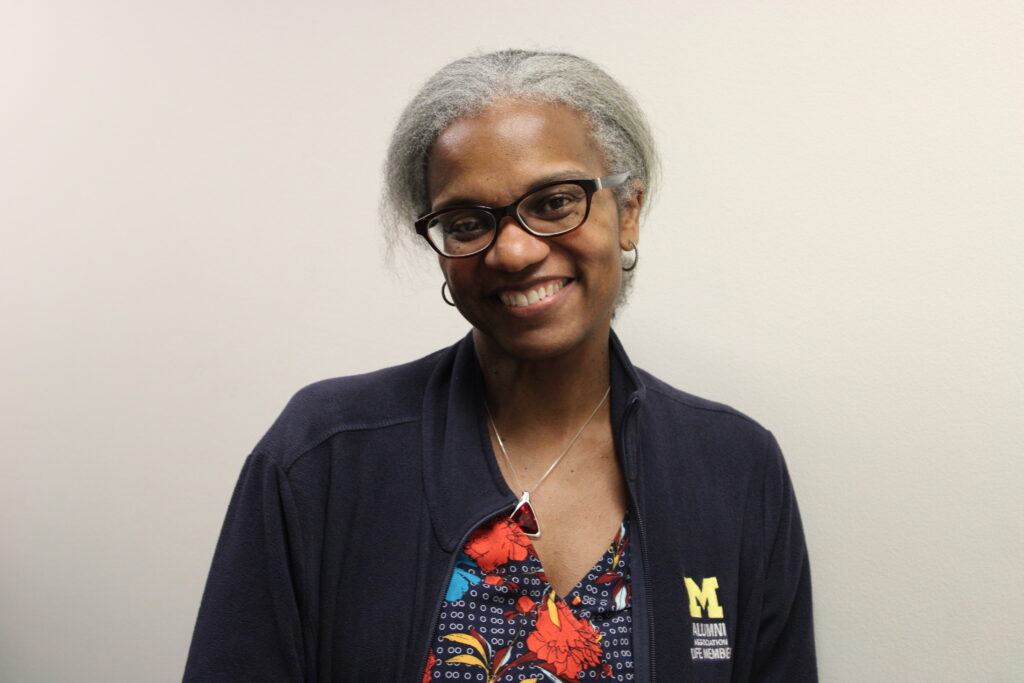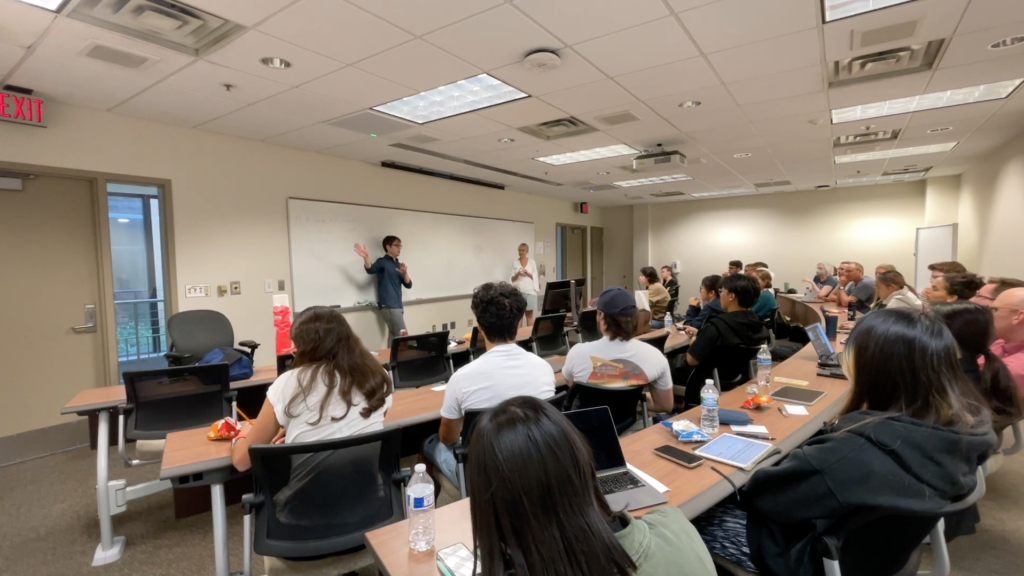
Same series, new structure
This year in U-M’s Industrial and Operations Engineering (IOE) 813 course, the Center for Healthcare Engineering & Patient Safety (CHEPS) is experimenting with a new format focused on enhancing innovation by leveraging resources across the University.
Titled Providing Better Healthcare Through Systems Engineering and led by Professor Amy Cohn, this series comprises eleven brainstorming sessions with healthcare professionals about ways to strategically utilize engineering to improve care delivery for all. Instead of a traditional lecture series, these sessions are intended to function more as “no such things as bad ideas” brainstorming workshops.
Diversity of thought is integral to the success of this series. Welcoming clinicians each week to present real world healthcare challenges they’ve experienced in practice allows others a glimpse behind the curtain. When joined in discussion with students, faculty, fellow clinicians, and members of the greater community (both within and without U-M), a climate is created that allows all voices, all perspectives, and all people to be heard—whether in the room or on Zoom.
Encouraging attendees after this Monday’s opening seminar, Professor Cohn said, “Ideas eventually evolve into something, even if the original idea isn’t the idea.” To her, it’s more realistic to focus on better understanding a challenge through the process of communal ideation . . . all while making interpersonal, cross-departmental connections along the way that ultimately can fix the problem(s) at hand.
A great first success
This week we spoke with Alexander T. Janke, MD, MHS, MSc, Emergency Department (ED) Physician at Michigan Medicine and Health Services Researcher, during a session titled “Reducing Emergency Department ‘Left-Without-Being-Seen’ Rates.”
Dr. Janke presented the problem of ED wait times being so long that some patients leave before they are seen by a physician.
“Emergency medicine is in trouble and we desperately need your help,” opened Dr. Janke. “In 1986, we passed the Emergency Medical Treatment & Labor Act. What it means is that every single person who walks through our doors is guaranteed medical screening evaluation and stabilizing treatment. It’s federal law.
“In practice, people come in the front door, they check in to receive care, and then they’re put in the waiting room where they wait for [up to] 24 hours. Many of them will leave prior to actually getting the medical screening evaluation that’s guaranteed to them by law.” The room listened intently as he outlined the dangers of critically ill or injured patients being unable to access care. “The consequences are really real.”
Dr. Janke next framed the conversation around the operational structure of the ED. He defined input (patients arriving), throughput (patients receiving treatment within the ED), and output (patients moving onto the next disposition, whether that’s discharge, inpatient or ICU admission, or transfer to another department). It is a complex blend of each of these stages that drives prolonged wait times and, ultimately, patients leaving before receiving care.
From there, Professor Cohn asked seminar attendees to share specific motivations patients may have to exit the ED without having been treated. Responses included reliance on public transportation, inability to afford the cost of hospital parking, lack of accessible child care, physical and/or emotional discomfort within the waiting room, hunger, and curiosity about whether another ED in the area might offer a shorter wait time.
Finally, all brainstormed about what solutions might be possible to relieve these barriers to care.
Familiar faces
Students from across the University, current CHEPSters, alumni, faculty members, and clinicians from other health systems asked excellent questions to better understand the problem while thoughtfully challenging norms and processes.
Alex Rogers, MD, Pediatric Emergency Physician and Clinical Professor at Michigan Medicine, shared about the unique challenges inherent to the pediatric ED, broadening the scope of the conversation to be more inclusive of varying patient ages.
Julie Simmons Ivy, PhD, MS, U-M IOE Chair, also participated. Professor Ivy provided many useful insights, particularly regarding the equity considerations necessary to fully discuss operational challenges like this one:
“I have a concern about bias and equity with some of these issues . . . Who’s more likely to leave? Who’s more likely to have bad outcomes?” asked Professor Ivy.
“We know that ‘left-without-being-seen’ is a feature that is most predominant for minoritized communities, non-English speaking communities, and people under the age of 65 with complex chronic conditions,” responded Dr. Janke. “I continue to advocate that our standard template for how we talk about this is wrong . . . patients [do not] leave without being seen. They are unable to access care guaranteed to them under federal law. We have to do better about that.”
Those interested in hearing more from Professor Ivy are encouraged to attend her own IOE 813 seminar on November 20th.


Join us next week
Next week’s session promises to be equally engaging as we discuss the potential intersection of pharmaceutical delivery and drones. Join us then, Mon. September 18th, from 4:30-6:00 PM in IOE 1680.
To RSVP to one or more sessions (or to request access to a session recording), please email [email protected].
— Written by Hannah Buck, CHEPS Staff

